
Centro Historico: The Heartbeat of Mexico City
Explore Centro Historico in Mexico City: A UNESCO World Heritage site brimming with history, culture, and vibrant street life. Discover iconic landmarks, museums, and local flavors.
Centro Historico, the historical center of Mexico City, is a vibrant tapestry of Mexico's rich cultural and architectural heritage. This neighborhood, a UNESCO World Heritage site, offers an array of experiences that captivate tourists from around the globe. Nestled in the heart of the city, Centro Historico is home to the iconic Zócalo, one of the largest public squares in the world. Visitors are often awestruck by the grandeur of the Metropolitan Cathedral, a majestic symbol of colonial architecture. Nearby, the National Palace showcases stunning murals by Diego Rivera, depicting Mexico's vivid history. Wandering through its cobblestone streets, tourists can explore a blend of old and new. The neighborhood is dotted with ancient Aztec ruins, such as the Templo Mayor, alongside contemporary art galleries and bustling markets. Street vendors offer delicious local delicacies, while traditional cantinas invite you to savor authentic Mexican cuisine and music. Centro Historico is also a shopper's paradise, with everything from high-end boutiques to local crafts. The vibrant Alameda Central, a lush urban park, provides a peaceful retreat amidst the city's hustle and bustle. Museums like the Palacio de Bellas Artes and Museo Nacional de Arte are must-visits for art enthusiasts. With its rich history, cultural diversity, and vibrant street life, Centro Historico is an unmissable destination for anyone visiting Mexico City.
Local tips in Centro Historico
- Visit early in the morning to avoid large crowds, especially at the Zócalo and major landmarks.
- Wear comfortable shoes as you'll be walking on cobblestone streets and exploring various sites.
- Keep an eye on your belongings. While Centro Historico is generally safe, it's always wise to be cautious in crowded areas.
- Try local street food, especially the tacos and churros, but make sure to choose vendors with good hygiene practices.
- Take a guided tour to fully appreciate the historical and cultural significance of sites like the Metropolitan Cathedral and Templo Mayor.
Centro Historico: The Heartbeat of Mexico City
Centro Historico, the historical center of Mexico City, is a vibrant tapestry of Mexico's rich cultural and architectural heritage. This neighborhood, a UNESCO World Heritage site, offers an array of experiences that captivate tourists from around the globe. Nestled in the heart of the city, Centro Historico is home to the iconic Zócalo, one of the largest public squares in the world. Visitors are often awestruck by the grandeur of the Metropolitan Cathedral, a majestic symbol of colonial architecture. Nearby, the National Palace showcases stunning murals by Diego Rivera, depicting Mexico's vivid history. Wandering through its cobblestone streets, tourists can explore a blend of old and new. The neighborhood is dotted with ancient Aztec ruins, such as the Templo Mayor, alongside contemporary art galleries and bustling markets. Street vendors offer delicious local delicacies, while traditional cantinas invite you to savor authentic Mexican cuisine and music. Centro Historico is also a shopper's paradise, with everything from high-end boutiques to local crafts. The vibrant Alameda Central, a lush urban park, provides a peaceful retreat amidst the city's hustle and bustle. Museums like the Palacio de Bellas Artes and Museo Nacional de Arte are must-visits for art enthusiasts. With its rich history, cultural diversity, and vibrant street life, Centro Historico is an unmissable destination for anyone visiting Mexico City.
Iconic landmarks you can’t miss
Alameda Central
Explore the serene beauty of Alameda Central, a historic park in Mexico City filled with lush landscapes, art, and cultural landmarks.

Plaza de la República
Explore the historical charm of Plaza de la República, a vibrant city park in Mexico City rich with culture and stunning architecture.

Mirador Torre Latino
Discover the breathtaking views and cultural richness of Mexico City at Mirador Torre Latino, an iconic landmark and must-see tourist attraction.

The House of Tiles
Explore the stunning Casa de los Azulejos, a historical masterpiece adorned with beautiful tiles in the heart of Mexico City, rich in culture and artistry.

Templo Mayor Museum
Explore the Templo Mayor Museum, a captivating site showcasing the Aztec civilization's rich history and archaeological treasures in the heart of Mexico City.

Hemiciclo a Juarez
Discover the Hemiciclo a Juarez, a magnificent monument celebrating Mexico's heritage and the legacy of Benito Juárez in the heart of Mexico City.

Templo Mayor de México-Tenochtitlan
Discover the majestic Templo Mayor, a UNESCO World Heritage site that unveils the splendor of the Aztec civilization in the heart of Mexico City.

Monument to the Mexican National Identity
Discover the Monument to the Mexican National Identity, a stunning tribute to Mexico's rich cultural heritage in the heart of Mexico City.

Coordinación Nacional de Monumentos Históricos
Immerse yourself in Mexico's rich cultural heritage at the Coordinación Nacional de Monumentos Históricos, a must-visit museum in the heart of Mexico City.

Centro Histórico CDMX
Discover the rich history and vibrant culture of Centro Histórico CDMX, the heart of Mexico City filled with stunning architecture and lively atmosphere.

Centro Historico
Discover the rich culture and history of Centro Historico, Mexico City's UNESCO World Heritage site, filled with stunning architecture and vibrant atmosphere.
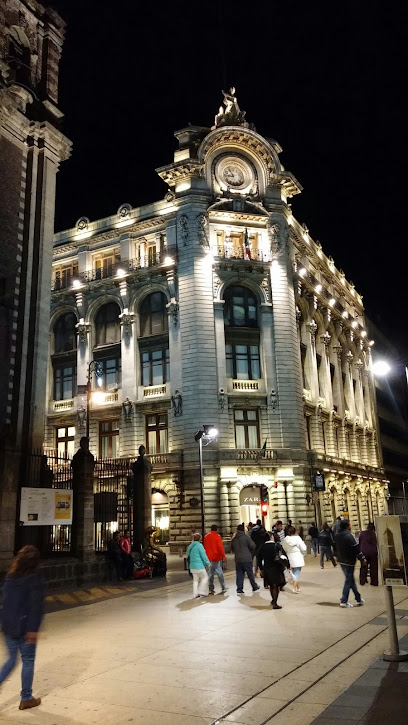
Ex Old Customs
Discover the rich history and architectural beauty of Ex Old Customs, a must-see historical landmark in the heart of Mexico City’s Historic Center.

Antiguo Palacio de la Santa Inquisición
Discover the haunting history and stunning architecture of the Antiguo Palacio de la Santa Inquisición in the heart of Mexico City.

Casa de la Malinche
Discover the rich history of Mexico City at Casa de la Malinche, a captivating landmark in the heart of the historic center.

Fuente de la República
Discover the enchanting Fuente de la República, a historic fountain in Mexico City that showcases the country's rich cultural heritage amidst tranquil surroundings.

Unmissable attractions to see
Plaza de la Constitución
Explore the iconic Plaza de la Constitución, a vibrant cultural hub in the heart of Mexico City, surrounded by historic architecture and lively atmosphere.
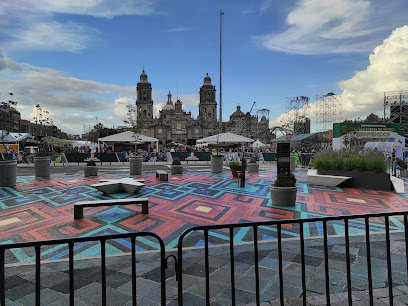
Palacio de Bellas Artes
Explore the captivating Palacio de Bellas Artes, a stunning architectural gem in Mexico City, showcasing the finest of art and culture.

Alameda Central
Explore the beauty and history of Alameda Central, a lush park in the heart of Mexico City, perfect for relaxation and cultural immersion.

The House of Tiles
Discover the charm of The House of Tiles, a stunning historical attraction in Mexico City, renowned for its beautiful tile façade and rich cultural heritage.
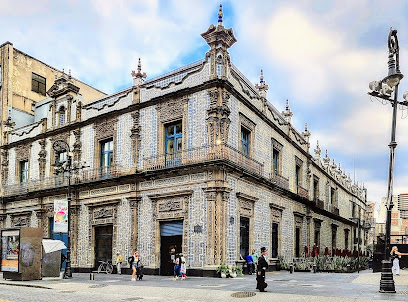
Mexico City Metropolitan Cathedral
Explore the Mexico City Metropolitan Cathedral, a magnificent blend of architectural styles and rich history in the heart of Mexico City.

Hemiciclo a Juarez
Explore the Hemiciclo a Juarez, a stunning monument in Mexico City celebrating history, culture, and the legacy of Benito Juarez.

Diego Rivera Mural Museum
Explore the iconic Diego Rivera Mural Museum in Mexico City and immerse yourself in vibrant art that reflects rich cultural narratives.

Monument to the Mexican National Identity
Explore the Monument to the Mexican National Identity and discover a rich tapestry of culture, history, and unity in the heart of Mexico City.

Centro de la ciudad de Mexico
Explore the vibrant Centro de la Ciudad de Mexico, a UNESCO World Heritage site filled with history, culture, and delicious cuisine in the heart of the capital.

Essential places to dine
Café De Tacuba
Experience authentic Mexican cuisine at Café De Tacuba in the heart of Mexico City's Historic Center.

El Cardenal
Experience authentic Mexican cuisine at El Cardenal in Mexico City's historic center—where tradition meets flavor.
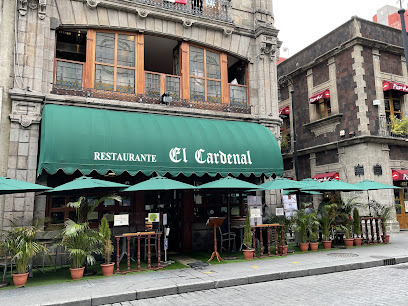
Azul Historico
Experience the essence of traditional Mexican cuisine at Azul Historico in the heart of Mexico City’s vibrant historic center.

El Mayor
Experience authentic Mexican flavors at El Mayor, where traditional cuisine meets vibrant culture in Mexico City's Historic Center.
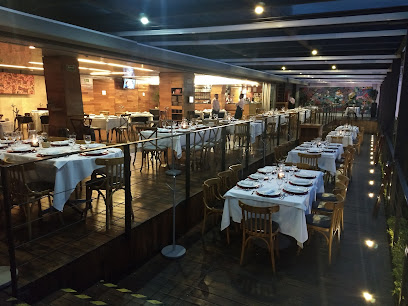
Balcón del Zócalo
Discover Balcón del Zócalo: Where authentic Mexican cuisine meets breathtaking views in Mexico City's historic heart.

La Opera
Discover La Opera in Mexico City - where tradition meets flavor in a historic setting filled with culinary delights.

Restaurante Mercaderes
Experience authentic Mexican flavors at Restaurante Mercaderes in Mexico City's historic center - where tradition meets culinary excellence.

Casino Español de México
Experience authentic Spanish cuisine at Casino Español de México – a culinary jewel in Mexico City's historic center.

Restaurante Don Toribio
Experience authentic Mexican flavors at Restaurante Don Toribio in Mexico City's historic center - where tradition meets taste.

Restaurante Catedral
Experience authentic Mexican breakfast at Restaurante Catedral in Mexico City's historic center – a perfect blend of flavor and culture.
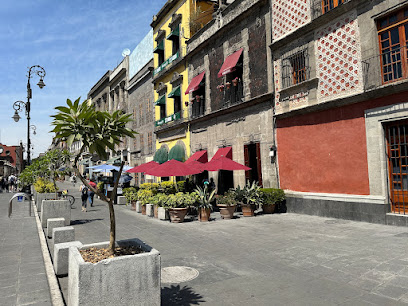
Markets, malls and hidden boutiques
El Palacio de Hierro Centro
Discover luxury shopping and culinary delights at El Palacio de Hierro Centro, a premier retail destination in the historic heart of Mexico City.
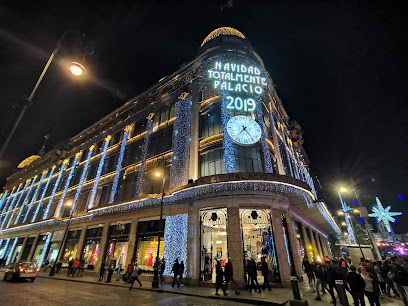
The Shops at Downtown
Explore unique shopping and dining experiences at The Shops at Downtown, the heart of Mexico City's vibrant culture and commerce.

Promoda Outlet
Explore the vibrant Promoda Outlet in Mexico City for unbeatable fashion deals and a unique shopping experience in the historic center.

Regalos de Prestigio, S.A. de C.V.
Explore Regalos de Prestigio in Mexico City: Your destination for authentic Mexican crafts and unique souvenirs.

Tienda MAP Centro
Explore the heart of Mexican craftsmanship at Tienda MAP Centro, a treasure trove of artisanal goods and cultural heritage in Mexico City.

Tiendas Circulo Mexicano
Discover the essence of Mexico City at Tiendas Circulo Mexicano, your gateway to artisanal treasures and cultural experiences.

Cubo Concept Store
Explore Cubo Concept Store in the heart of Mexico City for unique gifts and local liquors that embody Mexican culture and craftsmanship.

Suc imported. Plinth
Explore unique gifts and authentic souvenirs at Suc Imported Plinth, a charming gift shop in the heart of Mexico City's Historic Center.

La Santa Boutique cdmx
Explore La Santa Boutique in Mexico City for a unique blend of traditional Mexican fashion and modern style in the heart of the city.
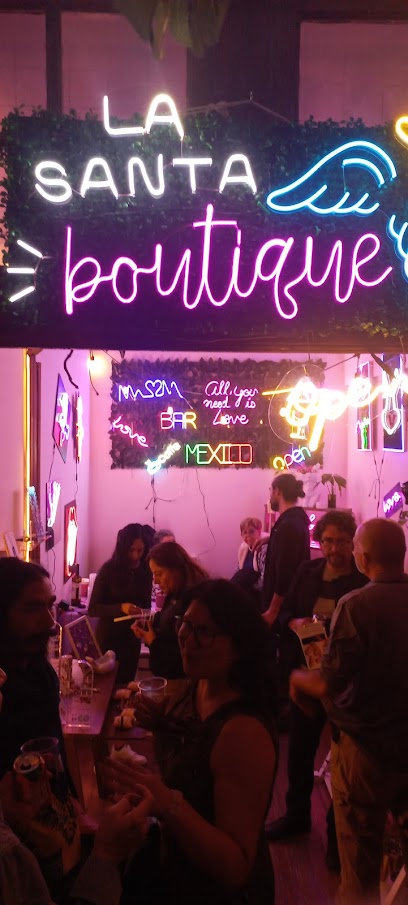
Centro Histórico cdmx
Discover the rich history and vibrant culture of Centro Histórico, the heart of Mexico City, filled with stunning architecture, local markets, and unforgettable experiences.

Essential bars & hidden hideouts
La Opera
Experience the vibrant flavors of authentic Mexican cuisine and a lively bar atmosphere at La Opera in Mexico City's Historic Center.

Bar Pata Negra
Experience the vibrant nightlife and authentic flavors of Mexico City at Bar Pata Negra, a top destination for food and drink lovers.

Terraza Catedral
Experience the vibrant atmosphere and stunning views of Terraza Catedral, a bar and restaurant in the heart of Mexico City, where tradition meets modernity.

BAR DONCELES
Discover Bar Donceles, a lively bar in the heart of Mexico City offering a unique blend of local culture, delicious cocktails, and vibrant nightlife.

Zinco Jazz Club
Discover the vibrant world of live jazz at Zinco Jazz Club, a cultural haven in the heart of Mexico City, where music and atmosphere unite.

Bar Rio de la plata
Experience the vibrant atmosphere and delicious drinks at Bar Rio de la Plata in the historic heart of Mexico City.

Terraza Dos Equis
Discover the heart of Mexico City's nightlife at Terraza Dos Equis - where live music, delicious food, and vibrant culture converge.

Bar La Gioconda
Experience the vibrant nightlife of Mexico City at Bar La Gioconda, a lively bar offering a diverse drink selection and a welcoming atmosphere.

Mancera bar
Discover Mancera Bar in Mexico City: a vibrant grill offering delicious food and a perfect ambiance for relaxation and social gatherings.

Mexicano - Bar
Experience vibrant nightlife and authentic Mexican cuisine at Mexicano, a must-visit bar in the heart of Mexico City.

Salón Bach
Experience vibrant nightlife at Salón Bach, a top bar in the historic center of Mexico City, known for its unique cocktails and lively atmosphere.

Bar el Tahur
Discover the vibrant nightlife at Bar el Tahur in the heart of Mexico City, where delicious drinks and a lively atmosphere await every visitor.

Bar El Sausalito
Discover the lively ambiance and diverse drink offerings at Bar El Sausalito, a must-visit bar in Mexico City's historic center.
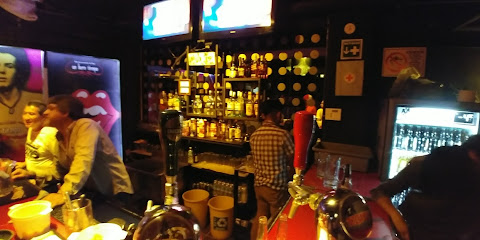
Local Phrases
-
- HelloHola
[oh-lah] - GoodbyeAdiós
[ah-dee-ohs] - YesSí
[see] - NoNo
[noh] - Please/You're welcomePor favor/De nada
[por fah-vor/deh nah-dah] - Thank youGracias
[grah-see-ahs] - Excuse me/SorryPerdón/Lo siento
[pair-dohn/loh see-en-toh] - How are you?¿Cómo estás?
[koh-moh ehs-tahs] - Fine. And you?Bien. ¿Y tú?
[byehn. ee too] - Do you speak English?¿Hablas inglés?
[ah-blahs een-glehs] - I don't understandNo entiendo
[noh ehn-tee-ehn-doh]
- HelloHola
-
- I'd like to see the menu, pleaseMe gustaría ver el menú, por favor
[meh goo-stah-ree-ah vehr ehl meh-noo, por fah-vor] - I don't eat meatNo como carne
[noh koh-moh kahr-neh] - Cheers!¡Salud!
[sah-lood] - I would like to pay, pleaseMe gustaría pagar, por favor
[meh goo-stah-ree-ah pah-gahr, por fah-vor]
- I'd like to see the menu, pleaseMe gustaría ver el menú, por favor
-
- Help!¡Ayuda!
[ah-yoo-dah] - Go away!¡Vete!
[veh-teh] - Call the Police!¡Llama a la policía!
[yah-mah ah lah poh-lee-see-ah] - Call a doctor!¡Llama a un médico!
[yah-mah ah oon meh-dee-koh] - I'm lostEstoy perdido/a
[ehs-toy pair-dee-doh/ah] - I'm illEstoy enfermo/a
[ehs-toy ehn-fehr-moh/ah]
- Help!¡Ayuda!
-
- I'd like to buy...Me gustaría comprar...
[meh goo-stah-ree-ah kohm-prahr...] - I'm just lookingSólo estoy viendo
[soh-loh ehs-toy vee-ehn-doh] - How much is it?¿Cuánto cuesta?
[kwan-toh kwehs-tah] - That's too expensiveEso es demasiado caro
[eh-soh ehs deh-mah-see-ah-doh kah-roh] - Can you lower the price?¿Puedes bajar el precio?
[pweh-dehs bah-har ehl pree-seh-oh]
- I'd like to buy...Me gustaría comprar...
-
- What time is it?¿Qué hora es?
[keh oh-rah ehs] - It's one o'clockEs la una
[ehs lah oo-nah] - Half past (10)Las diez y media
[lahs dyehs ee meh-dee-ah] - MorningMañana
[mah-nyah-nah] - AfternoonTarde
[tahr-deh] - EveningNoche
[noh-cheh] - YesterdayAyer
[ah-yehr] - TodayHoy
[oy] - TomorrowMañana
[mah-nyah-nah] - 1Uno
[oo-noh] - 2Dos
[dohs] - 3Tres
[trehs] - 4Cuatro
[kwah-troh] - 5Cinco
[seen-koh] - 6Seis
[says] - 7Siete
[syeh-teh] - 8Ocho
[oh-choh] - 9Nueve
[nweh-veh] - 10Diez
[dyehs]
- What time is it?¿Qué hora es?
-
- Where's a/the...?¿Dónde está...?
[dohn-deh ehs-tah] - What's the address?¿Cuál es la dirección?
[kwal ehs lah dee-rehk-syon] - Can you show me (on the map)?¿Puedes mostrarme (en el mapa)?
[pweh-dehs mohs-trar-meh (ehn ehl mah-pah)] - When's the next (bus)?¿Cuándo es el próximo (autobús)?
[kwan-doh ehs ehl proh-ksee-moh (ow-toh-boos)] - A ticket (to ....)Un boleto (a ....)
[oon boh-leh-toh (ah)]
- Where's a/the...?¿Dónde está...?
History of Centro Historico
-
Centro Historico, the heart of Mexico City, was originally built on the ruins of Tenochtitlan, the ancient capital of the Aztec Empire. Founded in 1325 on an island in Lake Texcoco, Tenochtitlan was a marvel of engineering, with canals and causeways connecting it to the mainland. The Spanish conquest in 1521 led to the city's destruction and the establishment of a new urban layout, with Spanish colonial architecture being built atop Aztec foundations.
-
After the fall of Tenochtitlan, the Spanish transformed the city into a colonial power center. In the 16th century, Centro Historico became the seat of the Spanish Viceroyalty of New Spain, leading to the construction of grand buildings such as the Metropolitan Cathedral and the Palacio de Gobierno. This period saw the fusion of indigenous and Spanish cultures, creating a unique architectural and cultural identity.
-
Centro Historico played a pivotal role during the Mexican War of Independence (1810-1821). The area's strategic significance made it a battleground for revolutionary forces. Notable events include the execution of independence leader Miguel Hidalgo's followers at the Plaza Mayor, now known as Zócalo, symbolizing the struggle for freedom and the eventual emergence of a new nation.
-
In the mid-19th century, Centro Historico was a focal point during the French Intervention (1862-1867) when Emperor Napoleon III sought to establish a French empire in Mexico. The area witnessed significant military confrontations, including the infamous Battle of Puebla. The brief reign of Emperor Maximilian I was marked by the construction of the Chapultepec Castle and the expansion of cultural institutions, which left a lasting legacy.
-
In the 20th century, Centro Historico underwent significant urban development and restoration efforts, particularly during the 1980s, when historical preservation became a priority. The area was declared a UNESCO World Heritage Site in 1987, recognizing its rich cultural and architectural heritage. Today, it is a vibrant hub of activity, showcasing museums, art galleries, and cultural festivals that celebrate Mexico's diverse history.
Centro Historico Essentials
-
Centro Historico is easily accessible from various parts of Mexico City. If you're arriving from the airport, you can take the Metro (Line 5 to Pantitlán, then transfer to Line 1 to Pino Suárez) or a taxi. From popular neighborhoods like Roma and Condesa, you can hop on Metro Line 1 or take a short taxi ride. Buses also run frequently to the Centro Historico, making it convenient to reach from other areas.
-
Centro Historico is pedestrian-friendly, with many attractions within walking distance. The Metro is a fast and affordable option, with stations like Bellas Artes and Zócalo located in the heart of the area. EcoBici, a bike-sharing program, is also available for those who prefer cycling. Taxis and ride-sharing services like Uber are widely used for longer distances or late-night travel.
-
While Centro Historico is generally safe during the day, it's advisable to remain cautious at night. Areas around the Zócalo and Alameda Central are vibrant but can have petty crime, such as pickpocketing. Avoid walking alone in less crowded streets after dark, and exercise extra caution near markets and public transport hubs.
-
In case of emergency, dial 911 for police, fire, or medical assistance. The main hospitals in Centro Historico include Hospital de la Raza and Hospital General. Keep a list of important contacts handy, including your hotel and local embassy or consulate. Ensure you have travel insurance that covers emergencies.
-
Fashion: Do dress comfortably for walking, but avoid overly casual attire in religious sites; women should wear skirts or dresses when visiting churches. Religion: Do respect religious practices; take off your hat when entering a church. Public Transport: Do be mindful of your belongings and let passengers exit before boarding. Don't engage in loud conversations. Greetings: Do greet with a polite 'buenos días,' 'buenas tardes,' or 'buenas noches.' Eating & Drinking: Do try local street food, but ensure it looks fresh. Don’t drink tap water; stick to bottled water.
-
To experience Centro Historico like a local, consider visiting the Mercado de San Juan for gourmet food and local delicacies. Join a walking tour to learn about the rich history and architecture. Participate in local events or festivals, which are often held in the Zócalo. For a unique view of the city, enjoy a coffee at a rooftop café overlooking the Plaza de la Constitución.
Trending Landmarks in Centro Historico
-
Alameda Central
-
Plaza de la República
-
Mirador Torre Latino
-
The House of Tiles
-
Templo Mayor Museum
-
Hemiciclo a Juarez
-
Templo Mayor de México-Tenochtitlan
-
Monument to the Mexican National Identity
-
Coordinación Nacional de Monumentos Históricos
-
Centro Histórico CDMX
-
Centro Historico
-
Ex Old Customs
-
Antiguo Palacio de la Santa Inquisición
-
Casa de la Malinche
-
Fuente de la República
Nearby Cities to Centro Historico
-
Things To Do in Puebla
-
Things To Do in Taxco
-
Things To Do in Queretaro
-
Things To Do in San Miguel de Allende
-
Things To Do in Guanajuato
-
Things To Do in Acapulco
-
Things To Do in Veracruz
-
Things To Do in Oaxaca
-
Things To Do in Puerto Escondido
-
Things To Do in Guadalajara
-
Things To Do in Ixtapa-Zihuatanejo
-
Things To Do in Puerto Vallarta
-
Things To Do in Chiapas
-
Things To Do in Monterrey
-
Things To Do in Matamoros













